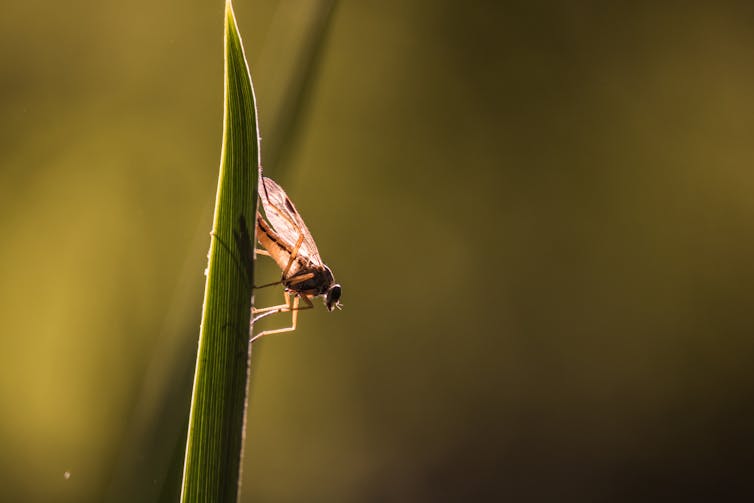
As summer arrives, many people are escaping to the remote and tranquil corners of the UK for their holidays. However, in certain parts of the country, your peaceful retreat often comes with a familiar guest in the form of midges, tiny insects that gather by the thousands.
Most articles about midges are about how to avoid or kill them. But I am here to tell you why you should appreciate them. For all insects, no matter how annoying they are, have a useful purpose.
First though, it’s important to understand exactly what midges are.
Midges are flies, members of the order Diptera. It is a group of over 150,000 known species including blowflies, crane flies and hoverflies to name but a few, but in reality there may be more than 1 million species.
The midges can be split into two groups – the biting midges (the family Ceratopogonidae) and the non-biting midges (the family Chironomidae). In the UK alone, there are more than 500 species of non-biting midge and more than 150 that bite. The former are sometimes just called gnats.
When people think of midges, they often think of the biting ones, perhaps as these are the most maligned in our culture. It is only the females however that bite, using the nutritious blood meal for their egg development. But they only ingest about 0.001ml of blood (about one 35,000th of a large measure of Scotch malt).
Female midges lacerate the skin with minute, blade-like mouthparts concealed within a fleshy sheath and then suck up the blood. This unique biting method can cause skin irritation. This process is quite different from that of mosquitoes, which pierce the skin.
It’s also interesting to note that the size of a person has some affect on whether you get bitten or not. Taller and larger people are more likely to get bitten. This could be due to the height at which they fly. It could also be because they are drawn to a larger target and the fact larger people produce more attractive chemicals such as carbon dioxide.

What use are midges?
Females midges often lay more than 100 eggs at a time that develop into small larvae. They live in damp habitats, such as bogs, ponds, and even the surface film of water often found on saturated ground or tree hollows. These larvae feed on decomposing matter in these habitats, recycling it.
Midges go through a period of metamorphosis, meaning that their larvae are unlike adults and occupy a totally different habitat or niche to the adults. These larvae provide a crucial ecosystem service helping to break down waste material and recycle it.
Triggered by warm weather and increased day length, the larvae hatch into swarms of midges. These swarms, as annoying as they are, provide another service for a range of animals. Midges are vital for many species, such as birds and bats, providing an abundant and easily obtained food source that they depend on. Humans eat them too – some cultures compress swarms of midges into a patty that can be fried and eaten for a highly nutritious meal.
Midges can also help provide food indirectly by providing another useful ecosystem service: pollination. In fact, the chocolate midges (members of the family Ceratopogonidae) are responsible for pollinating chocolate. Ironically, modern chocolate plantations are destroying the habitat that is necessary for the maintenance of healthy chocolate midge populations.
Sadly, flying insects are suffering in the UK. Over the last nine years, the UK has lost up to to 78% of our flying insects. Scientists have attributed this alarming pattern to a range of things, such as pollution and climate change. Numbers have dropped so dramatically people are calling it the “windscreen phenomenon” - people are noticing fewer bugs splattered on their car windscreens compared to past decades. Scientists are asking people to count the insects that are splatted on cars to help them survey insect populations.
Midges’ suffering is linked to their usefulness. They are what scientists refer to as indicator species, and one of the most sensitive ones at that. Shifts in their abundance and diversity can be linked to changes in environmental quality and can indicate the effects of things such as pollution and climate change. Some studies looking at midges in the fossil record are even using them to model how climate has changed over thousands of years.
It’s been a wet year so far in the UK – brace yourselves – it may be a good one for midges. And when you’re on holiday and being bothered by midges, try not to focus on how irritating they are. Instead, consider how they help us model climate change, aid in the decomposition cycle and provide food for humans and other animals.
Alex Dittrich does not work for, consult, own shares in or receive funding from any company or organisation that would benefit from this article, and has disclosed no relevant affiliations beyond their academic appointment.
This article was originally published on The Conversation. Read the original article.






